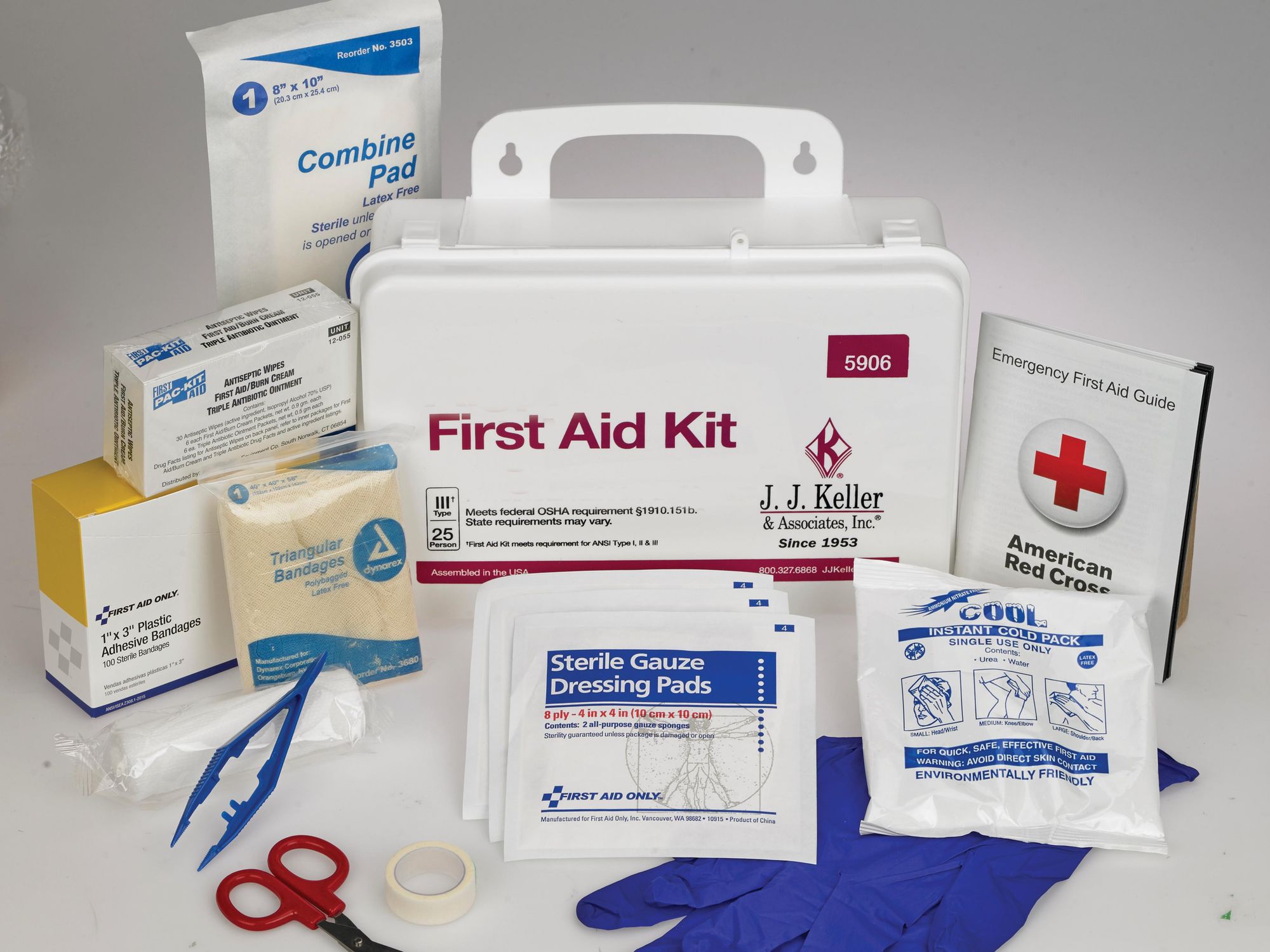First aid and medical requirements (General industry)

- In the event of an emergency, employees must know what to do and where first-aid kits and emergency eyewash stations are located.
- The basic steps of first aid include calling for help, analyzing the situation, refraining from moving the victim, evaluating for signs of life, controlling heavy bleeding, treating for shock, treating for choking, treating for burns, treating for chemical burns to the eye, and treating for fracture.
- First-aid supplies and other medical services must be available at the workplace, and it is recommended that employees be trained in administering first aid and CPR.
In emergency situations, prompt, properly administered first aid can mean the difference between life and death, rapid versus prolonged recovery, or temporary versus permanent disability. Safety comes first, but when accidents do happen, it is important to have someone who knows how to handle the situation effectively. It is important for employees to know what to do and what not to do in an emergency. If the person who encounters an emergency situation is not qualified, they should quickly get someone is. Also, employees should know where the first-aid kits and emergency eyewash stations are located before an incident occurs. They should also understand and follow the universal precautions when dealing with blood.
The following table lays out some basic first-aid information:
| First aid basics | Details |
|---|---|
| Call for help | If the employee is not alone, they should have someone go for help immediately. If they are alone, immediate care is a priority. However, that immediate care may be going for help. |
| Analyze the situation | Employees must take precautions to avoid becoming a victim themselves. If they can safely do so, they should move the victim away from any sources of danger such as water, fire, or downed power lines. All power sources should be turned off before touching an electrocuted victim. |
| Don’t move the victim | If there is any chance of spine or neck injury, the victim should not be moved unless they are in a life-threatening situation. |
| Look for signs of life | Look for signs of life and give artificial respiration or cardiopulmonary resuscitation (CPR) if necessary but only if employees have been trained. Confirm that help is on the way before starting CPR. Do not tilt the victim’s head back if there is a suspected neck injury. |
| Control heavy bleeding | Stop the flow of blood by applying direct pressure and/or elevating the injury above the heart or pressure points. Do not use a tourniquet unless the person is in danger of bleeding to death and employees have been trained to apply one. |
| Treat for shock | Signs of shock include cold, pale skin; a rapid, faint pulse; nausea; rapid breathing; and weakness. To treat for shock, keep the victim lying down; cover them only enough to maintain body heat; don’t move the victim unless absolutely necessary; and get medical help immediately. |
| Treat for choking | A person can choke to death in a few minutes. A sign of choking is if a person can’t speak, cough, or breathe. If the person is choking, use the Heimlich Maneuver. |
| Treat for burns | For small burns, gently soak the burn in cold water or pour cold water on the burn. Don’t treat large burns with water unless they’re chemical burns. Cover the burn with a dry, sterile bandage. Provide artificial respiration as needed. Seek medical attention. Some chemicals should not be flushed with water but neutralized by other means—see chemical label. |
| Treat for chemical burn in eye | Quickly flush the eyes with lots of water for at least 15 minutes (for best results, do so at an eyewash station, emergency shower, or hose). Try to force the eyes open to wash chemical out. Do not bandage eyes. Seek medical attention. |
| Treat for fracture | Do not move the victim unless absolutely necessary. This is especially important if there is a suspected neck or back injury. Seek medical help. |
